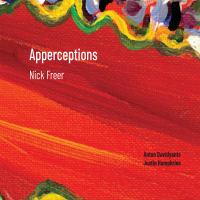Home » Jazz Articles » Profile » Mary Lou Williams: Jazz Healing
Mary Lou Williams: Jazz Healing
The prospect of writing a column on Mary Lou Williams is just a little bit daunting—reflecting on her considerable body of work and enormous talent, but to write about women jazz artists and not cover her would be as close to a jazz sin as I can think of. So, here goes...
As I was reviewing Williams' prolific career, I logged on to see what else might be online about her and stumbled onto a discussion of why there are so few women in jazz. The individual who began this debate had posited that it was due to the fact that women are inherently less creative than men. While it would be reassuring to some to think of Mary Lou as an exception to this man-made rule, she is in fact in very good, and numerous, company, past and present. Still, something about Williams seems to shine, at times, just a little bit brighter.
One of the most extraordinary aspects of Williams's career is the fact that she is the only major jazz artist whose playing spanned every era in the history of jazz: Spirituals, Ragtime, Blues, Small Jazzbands of the 1920's, Kansas City Swing, Boogie-Woogie, Bop/Modern, Avante-Garde. She was also one of the first women in jazz who really crossed gender lines. Williams achieved a status in jazz rare to women: unfaltering respect from her male colleagues as a musical equal. In Kansas City, Count Basie said, "Anytime she was in the neighborhood I used to find myself another little territory, because Mary Lou was tearin' everybody up." In Joan Burke's documentary on Mary Lou, saxophonist Buddy Tate agreed: "She was outplaying all those men. She didn't think so but they thought so."
William's mother, a single parent who worked as a domestic and played spirituals and ragtime on piano and organ, recognized Mary''s considerable talent when she was just a small child. She would hold three-year-old Mary Lou in her lap while she practiced on an old-fashioned pump organ, until one day, Mary Lou's hands beat hers to the keyboards, where she picked out a melody. Startled at the complexity of it, she dropped Mary Lou and ran to get the neighbors to come listen. Her mother said Mary Lou never left the piano after that day. Mary's mother refused to hire a teacher for fear the child would lose the ability to improvise, but instead invited professional musicians to their home. Mary learned by watching, listening and following their advice.
Williams quickly became known in her community as "the Little Piano Girl." Earl Hines' musicians would pick her up when she was in grade school and she would go out and jam with them. Soon she was in demand at the homes of the wealthy as well as at the after-hours gambling joints her stepfather used to sneak her into by hiding her under his oversize topcoat.
A consummate professional by the age of twelve, she toured in a vaudeville review called Hits and Bits, and on the Keith-Orpheum Circuit with Seymore and Jeanette. At thirteen she was playing with Duke Ellington's Washingtonians in the pit of the Lincoln Theater. In the late 1920's, after marrying saxophonist John Williams at the age of sixteen, Mary Lou formed her own small band in Memphis, Tennessee, which included Jimmie Lunceford. Afterward, a long association with Andy Kirk and his Twelve Clouds of Joy, for which she wrote orchestral compositions including "Walkin' and Swingin,'" "Froggy Bottom," "Steppin' Pretty," and "Cloudy." Williams toured widely with Kirk until 1941, when she moved to New York. During the Swing Era she wrote and arranged for all the popular Big Bands: Benny Goodman ("Roll Em" and "Camel Hop"), Jimmie Lunceford ("What's Your Story Morning Glory"), Duke Ellington ("Trumpet No End"), Glen Gray and the Casa Lomas, Bob Crosby, Cab Calloway, the Dorseys, Louis Armstrong, and Earl Hines.
In New York, her spacious Harlem apartment became a salon for many prominent jazz musicians of the 1940's—a space that fostered the creation of Bop and Modern jazz. Musicians such as Bud Powell, Thelonius Monk, Sarah Vaughn, Tadd Dameron, Art Blakey, Kenny Dorham, Charlie Parker, Hank Jones, Miles Davis and Dizzy Gillespie gathered at her apartment regularly to play and listen to this new music. Williams made the transition from Swing to Bop/Modern jazz smoothly during this time, developing into a modern pianist of exceptional scope. This period was rich and productive for Mary Lou, both as a performer and as a composer: long-standing gigs at Cafe Society, her own radio show on WNEW, the composition of "Zodiac Suite" and performance of this suite by the New York Philharmonic, and various trio recordings. Williams became widely known as a leader of small groups and trios performing in clubs throughout the U.S. and in Europe during this time.
In 1952, a nine-day job in Europe stretched into two years of performing there. In 1954, however, she left the jazz world for a few years and converted to Catholicism. During this period she composed richly expressive sacred music. A priest, Father Anthony Woods, and Dizzy Gillespie convinced Mary Lou to return to playing jazz. Her reentry into the jazz world took place at the 1957 Newport Jazz Festival in a performance with Dizzy's band.
In 1964, Williams wrote a piece called "St. Martin de Porres: Black Christ of the Andes," drawing an enthusiastic notice in Time magazine. In 1969, the Vatican commissioned her to write a mass—her third—which she titled "Music For Peace." The work premiered in 1970 at Columbia University and was later rewritten by Williams for the Alvin Ailey City Center Dance Theater (1971). It became known as "Mary Lou's Mass" and is considered among the most important contributions to the sacred music genre of its century.
The last years of Mary Lou's life were dedicated to bringing jazz to youth. Beginning in 1977, she taught and served as artist-in-residence at Duke University in Durham, North Carolina, also giving lectures and conducting workshops and choir-training sessions at other colleges and universities, and playing concert halls and clubs only on her vacations from teaching. Her emphasis was on enabling students to feel the music and she believed strongly that books that teach performance technique were partially responsible for the near death of jazz in her time:
"Pianists can have technique, but that's not enough," she remarks after her demonstration. "We're living in a technical society, and people think that if they go to school and learn it, they'll be able to play it right. Sure, you can play like a typewriter, but it'll make your audience nervous to listen to it. It's nothing that's written down in a book, you know." (Books & Arts, "Swinger With A Mission," Catherine O'Neill, December 7, 1979, pp. 30-31)
Williams' legacy is impressive. By the date of her death, on May 28, 1981, she had written over 350 musical compositions, recorded extensively, lectured in the most prestigious universities, performed for dignitaries in the White House, at Carnegie Hall with Cecil Taylor, and at the top jazz venues in the Unites States and abroad with her most esteemed contemporaries.
I can only offer a few suggestions for listening, viewing, and reading about Mary Lou Williams—a complete listing would be a book unto itself—but I can assure you that all of her work is equally excellent. There are no wrong choices where Mary Lou is concerned. Linda Dahl's biography of Williams, Morning Glory, is a great start reading about her and includes a more extensive, though not exhaustive, discography. To hear Mary Lou play, I'd suggest any of the following reissued CDs: Zodiac Suite, Embraced, Music For Peace (Mary Lou's Mass), Key Moments, Kansas City Bounce, Andy Kirk—Moten Swing and Jazz Piano Anthology: The Magic Touch, volume 4.
Recordings by other artists of Williams' compositions to listen to are: What's Your Story, Morning Glory?—Ella Fitzgerald (Verve 517535-2) or Milt Jackson (Original Jazz Classics 404-2), In The Land of Oo-bla-dee—Dizzy Gillespie Orchestra (RCA/BMG 09026-68499-2), Swingin' Til the Guys Come Home—Lambert, Hendricks and Bavan (Bluebird 6282-2-R11), Black Coffee—Sarah Vaughan (Columbia C2K44165), Walkin' Out the Door—Nat Cole (Capitol Jazz CDP 07777895452), and Marian McPartland Plays The Music of Mary Lou Williams (Concord Jazz 4605).
Two videos well worth watching are I Have A Dream (Edward Flannigan—New York University Motion Picture Workshop 1968) and Music On My Mind (Joanne Burke—1981. Distributed through Women Make Movies, New York.)
Enjoy!
Tags
PREVIOUS / NEXT
Support All About Jazz
 All About Jazz has been a pillar of jazz since 1995, championing it as an art form and, more importantly, supporting the musicians who make it. Our enduring commitment has made "AAJ" one of the most culturally important websites of its kind, read by hundreds of thousands of fans, musicians and industry figures every month.
All About Jazz has been a pillar of jazz since 1995, championing it as an art form and, more importantly, supporting the musicians who make it. Our enduring commitment has made "AAJ" one of the most culturally important websites of its kind, read by hundreds of thousands of fans, musicians and industry figures every month.
























